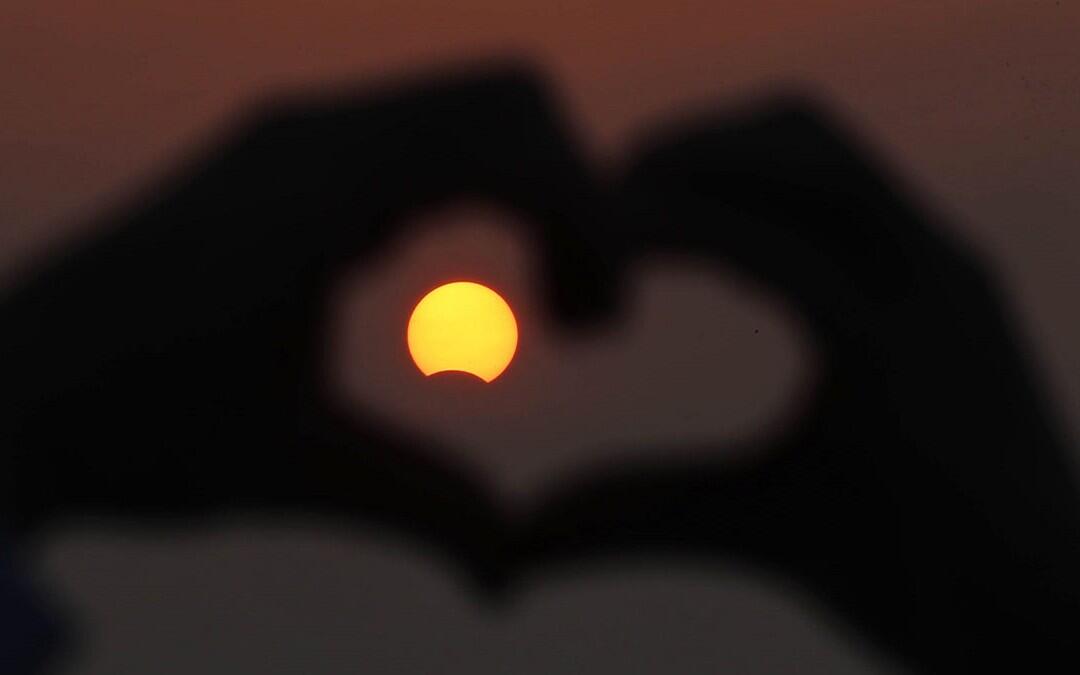NASA TV is streaming both “raw” telescope views and a hosted program for the March 8 (U.S. time) solar eclipse. The period of total eclipse, called totality, will occur from 8:38 to 8:42 p.m. EST.
The total eclipse will be visible in parts of South East Asia and a partial eclipse will be visible in parts of Alaska, Hawaii, Guam, and America Samoa. An eclipse occurs when the moon passes directly between Earth and the sun. When the moon’s shadow falls on Earth, observers within that shadow see the moon block a portion of the sun’s light.
What Is a Solar Eclipse?
Sometimes when the moon orbits Earth, it moves between the sun and Earth. This doesn’t happen every month, because the moon doesn’t orbit in the exact same plane that the sun and Earth do – but it does happen occasionally. When it happens, the moon blocks the light of the sun from reaching Earth. This causes an eclipse of the sun, or solar eclipse. During a solar eclipse, the moon casts a shadow onto Earth.
There are three types of solar eclipses.
The first is a total solar eclipse. A total solar eclipse is only visible from a small area on Earth. The people who see the total eclipse are in the center of the moon’s shadow when it hits Earth. The sky becomes very dark, as if it were night. For a total eclipse to take place, the sun, moon and Earth must be in a direct line.
The second type of solar eclipse is a partial solar eclipse. This happens when the sun, moon and Earth are not exactly lined up. The sun appears to have a dark shadow on only a small part of its surface.
The third type is an annular solar eclipse. An annular eclipse happens when the moon is farthest from Earth. Because the moon is farther away from Earth, it seems smaller. It does not block the entire view of the sun. The moon in front of the sun looks like a dark disk on top of a larger sun-colored disk. This creates what looks like a ring around the moon.
During a solar eclipse, the moon casts two shadows on Earth. The first shadow is called the umbra. This shadow gets smaller as it reaches Earth. It is the dark center of the moon’s shadow. The second shadow is called the penumbra. The penumbra gets larger as it reaches Earth. People standing in the penumbra will see a partial eclipse. People standing in the umbra will see a total eclipse.
Unlike lunar eclipses, solar eclipses only last for a few minutes.
NEVER look directly at the sun: It can permanently damage your eyes! You must use proper safety equipment to look at any type of solar eclipse.
Why Does NASA Study Eclipses?
Hundreds of years ago, when people observed the moon during an eclipse, they discovered that the shape of Earth is round. Even after all these years, scientists are still learning about the moon from lunar eclipses. In December 2011, NASA’s Lunar Reconnaissance Orbiter gathered data about how quickly the moon’s day side (the side that always faces Earth) cools during a lunar eclipse. NASA can learn what the moon’s surface is made of from this data. If an area of the moon’s surface is flat, it will cool quickly. Scientists use this data to know which areas of the moon are rough with boulders and which are flat.
NASA also studies solar eclipses. Scientists use solar eclipses as an opportunity to study the sun’s corona. The corona is the sun’s top layer. During an annular eclipse, NASA uses ground and space instruments to view the corona when the moon blocks the sun’s glare.











